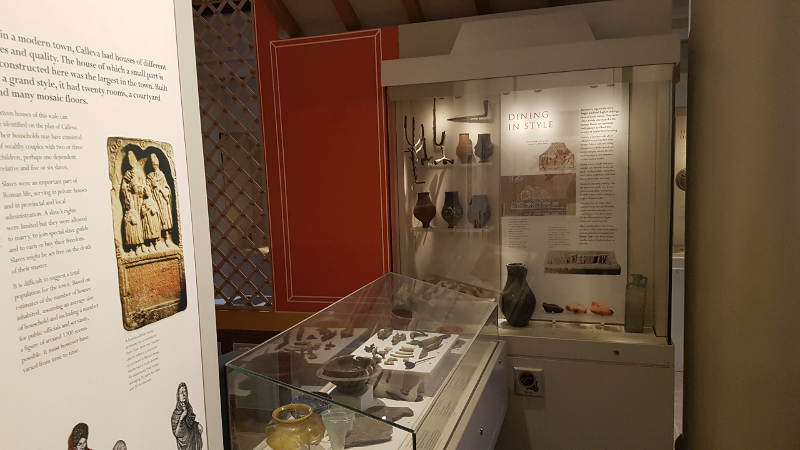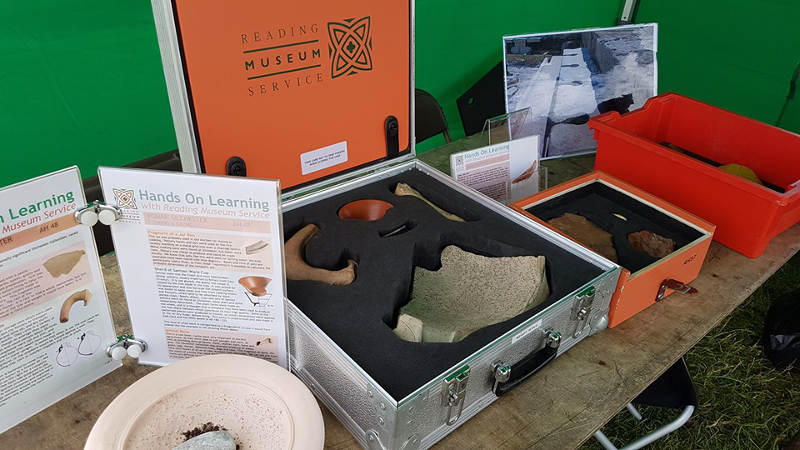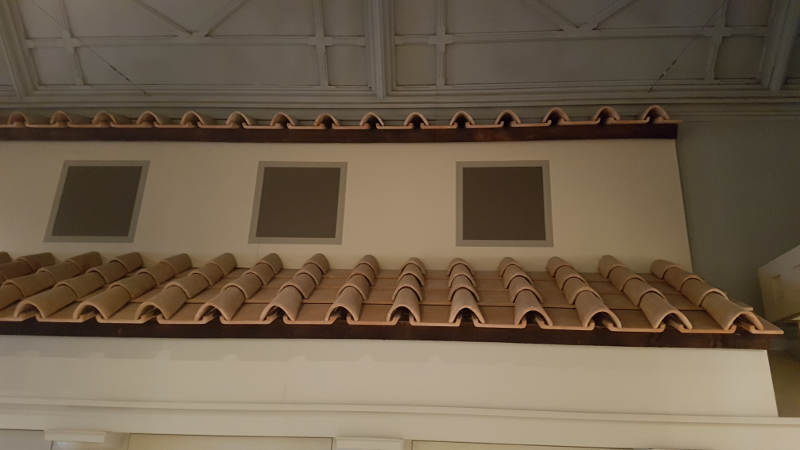The current Silchester Gallery opened in 1995, exploring the story of the Roman town that once stood ten miles south of modern Reading. Despite its popularity, especially with our local schools, the oldest gallery in the museum is now due for an update. So in summer 2019 we started gathering information and views from our current gallery visitors. We held a pop-up consultation at the museum's Roman fun day and talked to visitors at the University of Reading's Silchester Dig open day.
A redisplay of the gallery will still show off special objects like the Silchester eagle and the Calleva stone but will also introduce new ways to interpret the artefacts. In consultation with the Archaeology Department at the University of Reading we have developed new themes based on current research into the objects, the town and the diversity of Roman society.

Silchester Gallery display
Roman Fun Day at the Museum
Despite being the hottest day of the year over a 100 people visited the gallery for our Roman fun day consultation. We handed out ‘thumbs up’ and’ thumbs down’ for people to stick around the gallery to indicate which areas they liked and didn’t like. Visitors gave positive comments about the content of the displays, illustrations and dressing-up. They also liked the reconstruction elements in the gallery including the hypocaust underfloor heating and a section of roof tiles. There were a few negative comments about the darkness of the gallery and the layout of the current displays that meant some sections might be missed.

Silchester excavation summer 2019
Silchester Open Day
For many years the University of Reading’s Field School has carried out excavations at Silchester, the modern name of the Roman town of Calleva Atrebatum. In 2019 they excavated at the public bathhouse. At this year's Silchester open day dig we offered object handling and craft activities, and also surveyed 46 people. Most of the visitors came from the immediate local rural area of Hampshire and Berkshire. 59% of respondents had visited the Silchester Gallery at Reading Museum.

Silchester dig open day. Roman object handling
What you told us
People who had visited the museum galleries liked the 3D map of the town, the Silchester eagle, the reconstructed elements, and the interactive activities. They also praised the quantity of objects in the gallery, although in a few places it could be too crowded with objects and too dark. The most popular new theme ideas we asked about were:
- Working Life (65% agreed)
- Diversity of artefacts and the Roman population (61% agreed)
- How the town changed over time (61% agreed)
In the new gallery we want to explore more about the people that lived in Roman towns like Silchester. Research by Hella Eckart at the University of Reading has examined Romano-British skeletons to explore how diverse urban populations were in Roman Britain. The results show Britain under Rome was truly multi-cultural, with historical and epigraphic evidence recording the voluntary and forced migration of Gaulish, Germanic, and North African individuals. Find out more about Migration in the Roman world project, or see the Romans Revealed website for schools.
We also want the new displays to show the links between the Roman town at Silchester and the surrounding rural areas using finds from other Roman sites in the museum's archaeology collections, such as the 4th century AD Christian font from Dean's Farm in Lower Caversham.
Look out for more details over the next year as we continue planning towards the new Silchester Gallery at Reading Museum.

Silchester Gallery roof reconstruction





